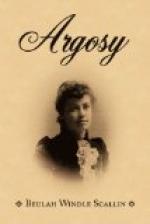4 1 6 10 4 12 9 1 ----------------------------------- 16.36 151.18 58.7 14.29 368.1 209.18 43.11 1.31 1.1 ----------------------------------- 11 3 9 8 29.6 186.9 204.11 86.19 43.16 348.14 196.29 203.5
4 5 10 6 1 5 6 2 186.9 1.31 21.10 143.18 200.6 29.40 408.9 61.5
5 9 4 8 3 12 11 4 209.11 496.1 24.24 28.59 69.39 391.10 60.13 200.1 2 6 4 1 10 11 5 3
The following is Mr. Bexell’s reply to his friend Captain Ducie:
“My dear Ducie,—With this note you will receive back your confounded Ms., but without a translation. I have spent a good deal of time and labour in trying to decipher it, and the conclusions at which I have arrived may be briefly laid before you.
1. Each group of three sets of figures represents a word.
2. Each group of
two sets of figures—those with a line above
and a
line below—represents
a letter only.
3. Those letters
put together from the point where the double line
begins to the point
where it ceases, make up a word.
4. In the composition
of this cryptogram a book has been used as
the basis on which to
work.
5. In every group of three sets of figures the first set represents the page of the book; the second, the number of the line on that page, probably counting from the top; the third the position in ordinary rotation of the word on that line. Thus you have the number of the page, the number of the line, and the number of the word.
6. In the case of the interlined groups of two sets of figures, the first set represents the number of the page; the second set the number of the line, probably counting from the top, of which line the required letter will prove to be the initial one.
7. The words thus spelled out by the interlined groups of double figures are, in all probability, proper names, or other uncommon words not to be found in their entirety in the book on which the cryptogram is based, and consequently requiring to be worked out letter by letter.
8. The book in question is not a dictionary, nor any other work the words of which come in alphabetical rotation. It is probably some ordinary book, which the writer of the cryptogram and the person for whom it is written have agreed upon beforehand to make use of as a key. I have no means of judging whether the book in question is an English or a foreign one, but by it alone, whatever it may be, can the cryptogram be read.
“Now, my dear Ducie, it would




